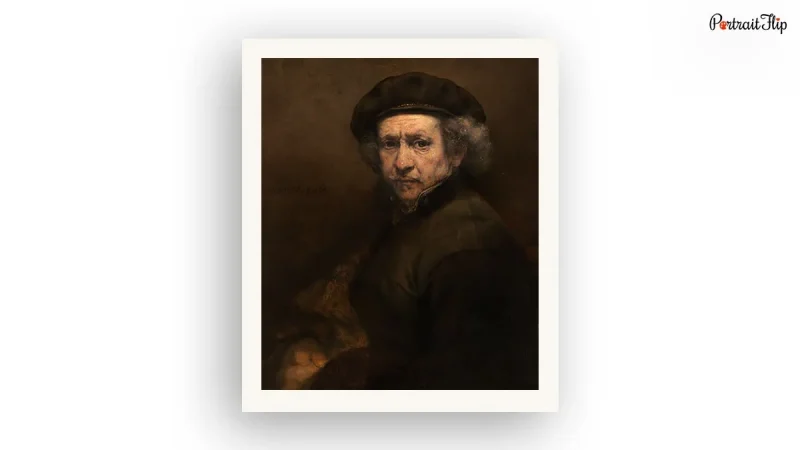The Netherlands has long been a beacon of artistic innovation and brilliance, producing some of the most influential painters in history. Famous Dutch painters have left an indelible mark on the art world, not only through their breathtaking works but also through their unique approaches to technique, subject matter, and emotional depth. This article will explore ten iconic Dutch painters whose contributions have transformed art forever, examining their lives, styles, and lasting legacies.
Rembrandt van Rijn: The Master of Light and Shadow
Rembrandt van Rijn (1606–1669) is arguably the most renowned of all famous Dutch painters. His ability to manipulate light and shadow created a sense of depth and realism that was unparalleled in his time. Rembrandt’s portraits, such as The Night Watch and Self-Portrait with Two Circles, showcase his mastery in capturing human emotion and the complexity of the human experience.
His innovative use of chiaroscuro—contrasting light and dark—allowed him to bring his subjects to life. Rembrandt’s work has influenced countless artists and continues to inspire those who seek to explore the depths of human emotion through art.
Vincent van Gogh: The Colorful Expressionist
Vincent van Gogh (1853–1890) is one of the most famous Dutch painters, known for his vibrant use of color and expressive brushwork. His post-impressionist style reflects his emotional struggles and deep appreciation for nature. Works like Starry Night and Sunflowers not only display his unique color palette but also offer insight into his tumultuous psyche.
Van Gogh’s letters to his brother Theo provide a glimpse into his thoughts and artistic philosophy, revealing a man who sought to communicate his feelings through his art. Despite his tragic life, his influence on modern art is profound, inspiring movements like Fauvism and Expressionism.
Johannes Vermeer: The Master of Domestic Scenes
Johannes Vermeer (1632–1675) is celebrated for his intimate depictions of everyday life, making him one of the most famous Dutch painters. His works, such as Girl with a Pearl Earring and The Milkmaid, are renowned for their exquisite detail and use of light. Vermeer’s meticulous technique and ability to convey a sense of stillness and tranquility have made his paintings timeless.
Although he produced only about 36 known paintings, Vermeer’s work has had a lasting impact on artists and art lovers alike. His mastery of color and composition continues to captivate audiences, establishing him as a pivotal figure in the history of art.
Piet Mondrian: The Pioneer of Abstract Art
Piet Mondrian (1872–1944) was a groundbreaking figure among famous Dutch painters, known for his role in the development of abstract art. His distinctive style, characterized by geometric forms and primary colors, challenged traditional notions of representation. Works like Composition with Red, Blue, and Yellow exemplify his belief that art should reflect universal harmony and order.
Mondrian’s philosophy of reducing form to its essence laid the groundwork for movements such as Minimalism and Concrete Art. His influence extends beyond the canvas, affecting architecture, design, and fashion, making him a pivotal figure in modern art.
Frans Hals: The Portrait Innovator
Frans Hals (1582–1666) is recognized for his lively and dynamic portraits, which set him apart from his contemporaries. Famous for his ability to capture personality and emotion, Hals’ works such as The Laughing Cavalier exhibit a spontaneity that brings his subjects to life. His loose brushwork and vibrant color palette were revolutionary, paving the way for future generations of portrait painters.
Hals’ innovative approach to capturing human expressions and the play of light has had a lasting impact on portraiture. His work continues to inspire artists seeking to convey character and emotion through their art.
Jacob van Ruisdael: The Landscape Master
Jacob van Ruisdael (1628–1682) is one of the most important figures among famous Dutch painters known for his breathtaking landscapes. His works, such as View of Haarlem with Bleaching Fields and The Jewish Cemetery, depict the natural beauty of the Dutch countryside with remarkable detail and atmospheric effects.
Ruisdael’s ability to convey mood and emotion through landscape has made him a pivotal figure in art history. His paintings reflect the relationship between humans and nature, influencing the Romantic movement and landscape painting for centuries to come.
Judith Leyster: The Trailblazing Female Artist
Judith Leyster (1609–1660) stands out among famous Dutch painters as one of the few prominent female artists of her time. Her vibrant genre scenes and portraits, like The Proposition and Self-Portrait, showcase her talent and skill. Leyster’s work is characterized by its lively subjects and innovative compositions, often depicting moments of joy and intimacy.
Despite the challenges faced by women in the art world during the 17th century, Leyster established herself as a successful artist, earning recognition in her own right. Her contributions to genre painting and portraiture continue to inspire modern artists.
Paul Gauguin: The Colorful Visionary
Although Paul Gauguin (1848–1903) is often associated with French art, his early career began among famous Dutch painters. His time in the Netherlands shaped his artistic vision and love for bold colors. Gauguin’s work, such as Where Do We Come From? What Are We? Where Are We Going?, reflects his quest for meaning and identity.
His departure from traditional representation to a more symbolic and expressive style has influenced numerous artists, particularly in the development of modern art. Gauguin’s exploration of color and form has inspired generations of painters seeking to break away from conventional norms.
Aelbert Cuyp: The Master of Light
Aelbert Cuyp (1620–1691) is known for his remarkable ability to capture light in his landscapes. Famous Dutch painters like Cuyp utilized natural lighting to create a sense of warmth and atmosphere in works such as The Maas at Dordrecht and A Landscape with Cattle. His serene depictions of rural life and landscapes have made him a celebrated figure in Dutch art history.
Cuyp’s innovative use of light and color has influenced countless artists and remains an inspiration for contemporary landscape painting. His ability to evoke emotion through natural beauty solidifies his place among the most iconic Dutch painters.
Theo van Rysselberghe: The Pointillist Innovator
Theo van Rysselberghe (1862–1926) was a key figure in the pointillist movement and one of the lesser-known yet influential famous Dutch painters. His works, characterized by small dots of color, such as Portrait of a Young Woman, showcase his mastery of technique and color theory. Van Rysselberghe’s dedication to the pointillist style reflects his belief in the emotional power of color.
His contributions to the pointillist movement influenced artists across Europe, solidifying his legacy in the art world. Van Rysselberghe’s innovative approach continues to inspire those who explore color and technique in their work.
Conclusion
Famous Dutch painters have profoundly impacted the world of art through their innovative techniques, emotional depth, and unique perspectives. From Rembrandt’s masterful use of light to Van Gogh’s vibrant colors and Vermeer’s intimate scenes, these artists have transformed the way we perceive and appreciate art. Their legacies continue to inspire generations, reminding us of the power of creativity and expression.
Whether exploring the landscapes of Ruisdael or the abstract compositions of Mondrian, the contributions of these iconic painters have shaped the art world forever. Their works not only celebrate the beauty of the human experience but also challenge us to see the world through new lenses.
FAQs
Q1. Who are the most famous Dutch painters?
The most famous Dutch painters include Rembrandt, Vincent van Gogh, Johannes Vermeer, Piet Mondrian, and Frans Hals.
Q2. What is the significance of Dutch painters in art history?
Famous Dutch painters significantly influenced various art movements and techniques, particularly in the use of light, color, and emotion, shaping modern art as we know it today.
Q3. How did Dutch painters influence modern art?
Dutch painters introduced innovative techniques and styles, such as chiaroscuro and abstraction, which inspired later movements like Impressionism, Expressionism, and Modernism.
Q4. What themes are common in Dutch painting?
Common themes in Dutch painting include portraits, landscapes, still lifes, and scenes of everyday life, often reflecting the culture and values of Dutch society during their time.
Q5. Where can I see the works of famous Dutch painters?
Many famous Dutch paintings can be viewed in renowned museums such as the Rijksmuseum in Amsterdam, the Van Gogh Museum, and the Mauritshuis in The Hague.
Also read: Oud West Neighborhood Amsterdam: 10 Reasons to Fall in Love









